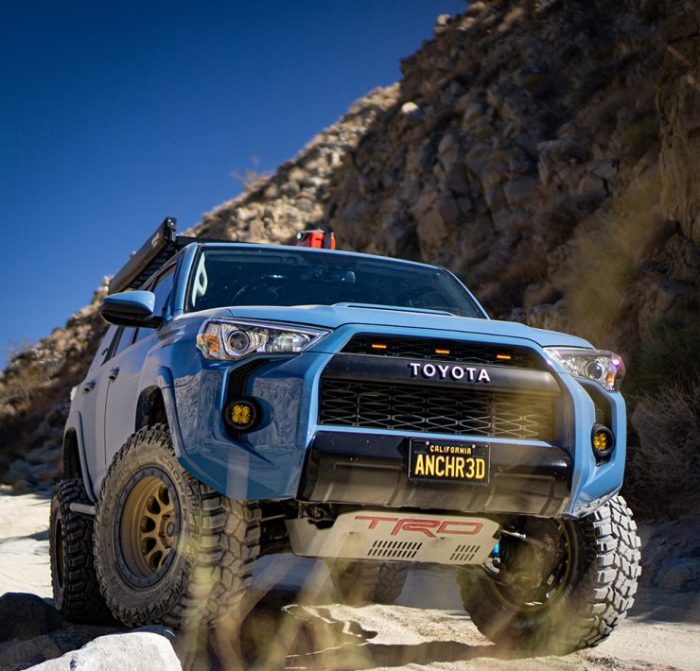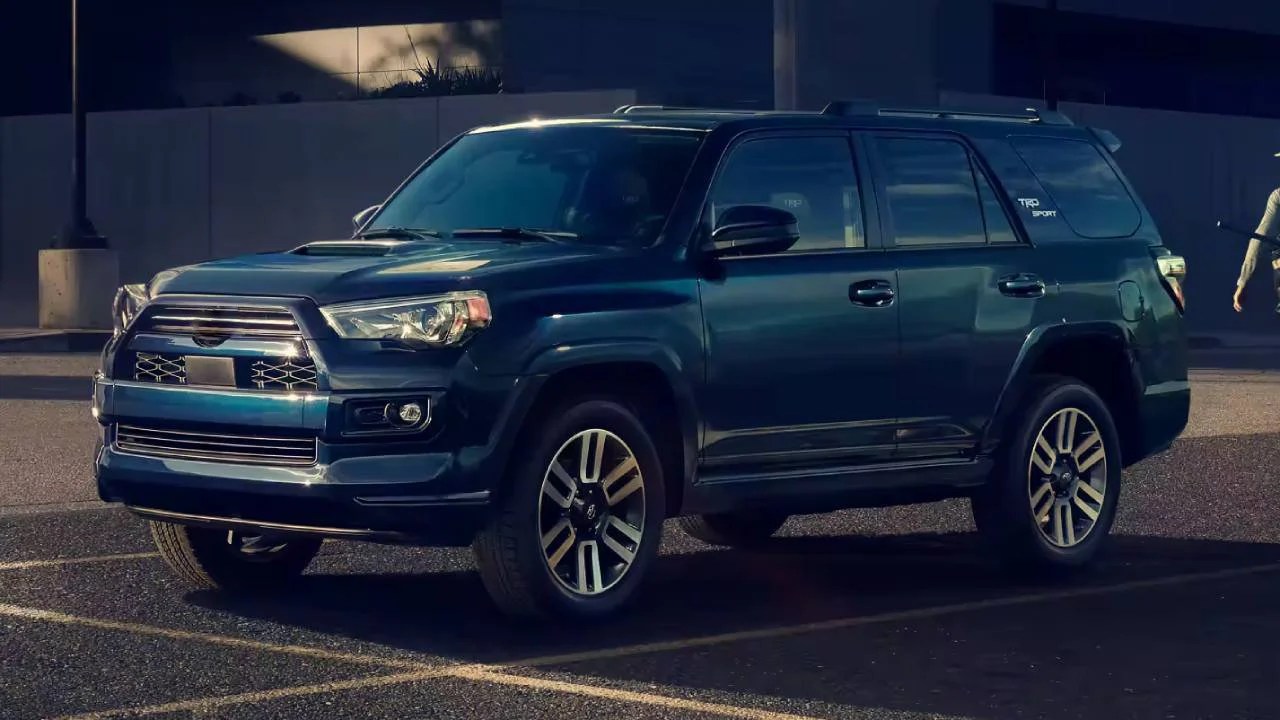How to Upgrade Your Toyota 4Runner for Better Off-Road Capability – The Toyota 4Runner is a legendary SUV, renowned for its ruggedness and off-road prowess. However, even a stock 4Runner can benefit from upgrades to conquer more challenging terrains. This comprehensive guide will walk you through various modifications, from simple bolt-on parts to more involved mechanical changes, to significantly enhance your 4Runner’s off-road capabilities. We’ll cover everything from suspension lifts and tire upgrades to more advanced modifications like skid plates and winches.
Remember to always prioritize safety and legality when modifying your vehicle.
Suspension Upgrades: The Foundation of Off-Road Performance
A properly upgraded suspension system is the cornerstone of any serious off-road build. It dictates your vehicle’s ground clearance, articulation, and overall ride quality on and off the road. Several options exist, each with its own advantages and disadvantages:
Lift Kits: Heightening Your Clearance, How to Upgrade Your Toyota 4Runner for Better Off-Road Capability
Lift kits increase your 4Runner’s ground clearance, allowing you to navigate obstacles more easily. They come in various heights, from subtle 1-inch lifts to substantial 6-inch or even greater lifts. Choosing the right lift depends on your intended use and the type of terrain you’ll be tackling. Consider these factors:
- Budget: Lift kits range widely in price, from relatively affordable spacer lifts to more expensive long-travel suspension systems.
- Type of lift: Spacer lifts are the simplest and cheapest, but they offer less articulation. Coilover and leaf spring lifts provide better articulation and adjustability.
- Intended use: A mild lift might suffice for light off-roading, while a more substantial lift is necessary for serious rock crawling.
Popular brands include Old Man Emu (OME), ICON Vehicle Dynamics, and King Shocks. Researching different lift kits and their suitability for your specific 4Runner model and year is crucial.
Shocks and Struts: Controlling the Ride
Upgrading your shocks and struts is essential, regardless of whether you install a lift kit. Factory shocks are often designed for on-road comfort, lacking the damping capabilities needed for off-road use. High-performance shocks, like those from Fox, Bilstein, or Rancho, provide better control, improved articulation, and a smoother ride over rough terrain. Choosing the right shock valving is crucial, as it dictates how the shock reacts to different impacts.
Control Arms and Other Suspension Components: Enhancing Articulation
For serious off-roading, upgrading control arms, sway bars, and other suspension components can significantly improve articulation. This allows your wheels to maintain contact with the ground even on uneven terrain, preventing wheel lift and improving traction. Long-travel suspension systems offer the best articulation but are generally more expensive and require more significant modifications.

Source: offroadium.com
Tire Upgrades: Gripping the Terrain
Tires are your 4Runner’s direct interface with the ground. Upgrading to off-road tires is crucial for improved traction, grip, and durability. Consider these factors:
- Tire size: Larger tires offer more ground clearance and better traction, but they may require modifications to your wheel wells or suspension to avoid rubbing.
- Tire type: All-terrain (AT) tires offer a good balance of on-road and off-road performance. Mud-terrain (MT) tires excel in mud and loose terrain but can be noisy and less fuel-efficient on the road.
- Tire tread pattern: Different tread patterns offer varying levels of grip in different conditions. Consider the types of terrain you’ll be driving on most frequently.
Popular off-road tire brands include BFGoodrich, Goodyear, Nitto, and Toyo. Remember to check your 4Runner’s specifications to ensure you choose tires that are compatible with your wheel size and suspension.
Armor and Protection: Shielding Your Undercarriage
Off-roading inevitably exposes your 4Runner to rocks, logs, and other obstacles. Protecting your undercarriage with skid plates is crucial to prevent damage to vital components like the oil pan, transmission, and transfer case. Skid plates come in various materials, including steel and aluminum. Steel offers superior protection but is heavier, while aluminum is lighter but may be less durable.
Winch and Recovery Gear: Preparing for the Unexpected
A winch is an invaluable tool for self-recovery in challenging situations. It allows you to pull your 4Runner out of mud, ruts, or other obstacles. Choosing the right winch depends on your 4Runner’s weight and your intended use. Ensure you have appropriate mounting points and a strong winch line. Always practice safe winching techniques and use appropriate recovery gear, such as shackles, straps, and gloves.

Source: shopify.com
Other Important Upgrades
- Differential lockers: Lockers force both wheels on an axle to rotate at the same speed, improving traction in low-traction situations. They are particularly beneficial for rock crawling.
- Rock sliders: These protect your 4Runner’s rocker panels from damage when sliding over rocks or other obstacles.
- Bull bar or bumper: These provide added protection for the front of your vehicle and can serve as mounting points for a winch or other accessories.
- Lighting upgrades: Improved lighting is essential for night driving off-road. Consider upgrading to LED lights for increased brightness and longevity.
- Recovery points: Strategically placed recovery points are essential for safe winching and recovery.
Frequently Asked Questions (FAQ)
- Q: How much does it cost to upgrade a 4Runner for off-roading? A: The cost varies greatly depending on the extent of the modifications. A basic lift and tire upgrade can cost a few thousand dollars, while a more comprehensive build can cost tens of thousands.
- Q: What is the best lift kit for a 4Runner? A: The best lift kit depends on your budget, intended use, and 4Runner model. Research different brands and options to find the best fit for your needs.
- Q: Do I need to re-gear my differentials after a lift? A: Depending on the lift height and tire size, you may need to re-gear your differentials to maintain optimal performance and prevent excessive strain on your drivetrain. Consult a professional to determine if re-gearing is necessary.
- Q: What are the legal implications of modifying my 4Runner? A: Check your local laws and regulations regarding vehicle modifications. Some modifications, such as excessively large tires or lifted suspensions, may not be street legal.
Resources: How To Upgrade Your Toyota 4Runner For Better Off-Road Capability
Conclusion
Upgrading your Toyota 4Runner for off-road capability is a rewarding process that can transform your vehicle into a true off-road beast. By carefully considering the various modifications available and choosing the right components for your needs and budget, you can significantly enhance your 4Runner’s performance and enjoy even more adventurous journeys. Remember to prioritize safety and legality throughout the process.
Call to Action
Ready to take your 4Runner to the next level? Start planning your upgrade today! Research the options, gather your budget, and contact a reputable off-road shop for professional installation and advice. Happy trails!
FAQ Insights
What is the average cost of upgrading a 4Runner for off-roading?
Costs vary drastically depending on the modifications chosen. A basic lift kit and tires might cost a few thousand dollars, while extensive modifications can reach tens of thousands.
Do I need to inform my insurance company about modifications?
Yes, significant modifications, especially those affecting performance or safety, should be reported to your insurance company to ensure adequate coverage.
What is the best type of tire for off-roading in my area?
The optimal tire type depends on your local terrain (mud, rocks, sand, snow). Consult a tire professional to determine the best option for your specific needs and driving conditions.
